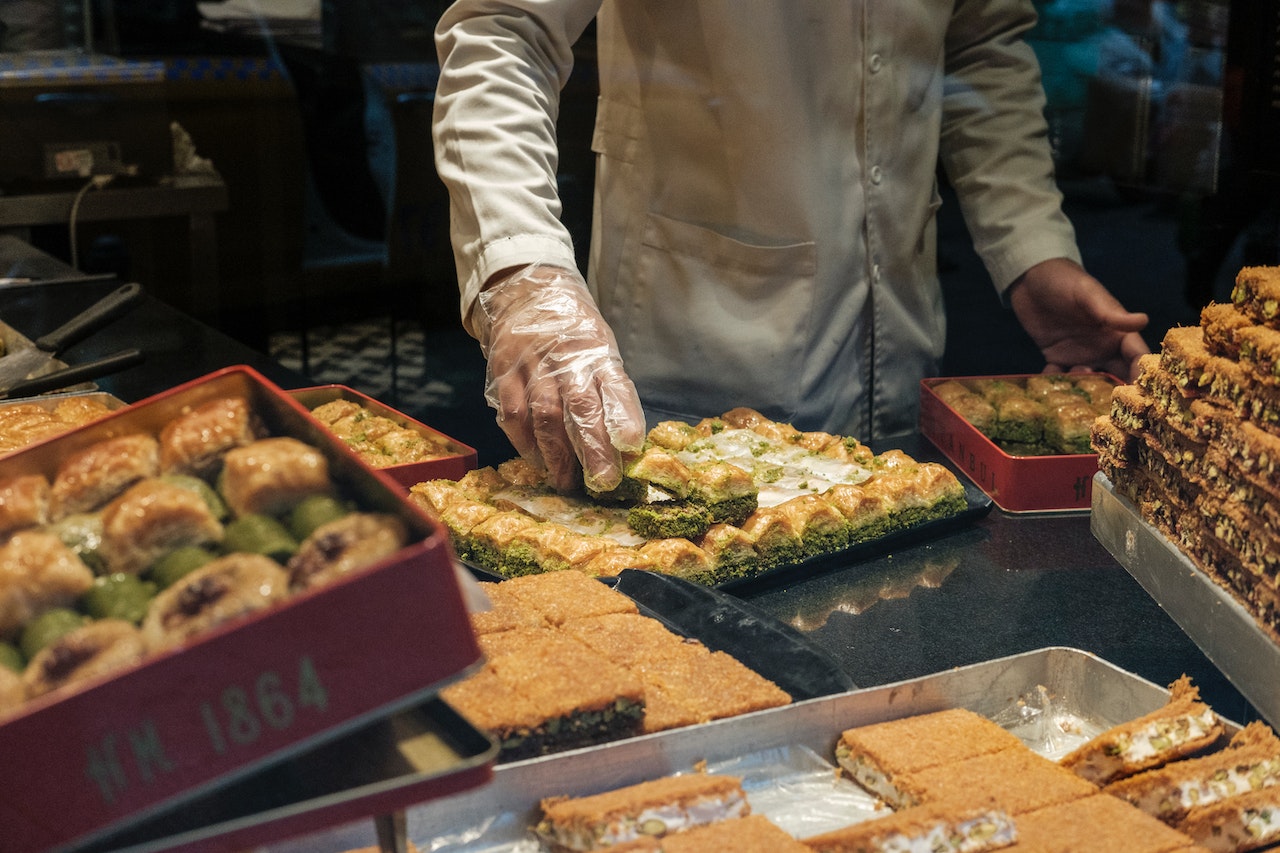
Turkey is one of those fascinating countries that when you finally visit and see for yourself, you’ll wonder what took you so long. From Istanbul to Cappadocia, the historic cities and amazing regions of Turkey will make you fall in love with the country. Through several empires and 4,000 years of civilizations, Turkey has gained a culture so multi-faceted and rich. So how do you get to know this wonderful, diverse culture? Beyond the spectacular architecture and ancient sites, through mouthwatering Turkish foods, of course!
A country’s local cuisine is always a good way to get to know a new place. You get to learn about its traditions, history, and people. In Turkey, there’s a lot of traditional food to serve this up. Here are just some of the best foods in Turkey you should try for a memorable and flavorful experience.
Kebap. Let’s start with probably one of the most popular Turkish foods, the kebap or kebab is basically roasted meat and comes in different forms. The döner kebap is an open-faced sandwich filled with thinly sliced meat cooked on a vertical spit, which is recognised even outside Turkey. But if you’re in the country, you should try other kinds of kebaps.
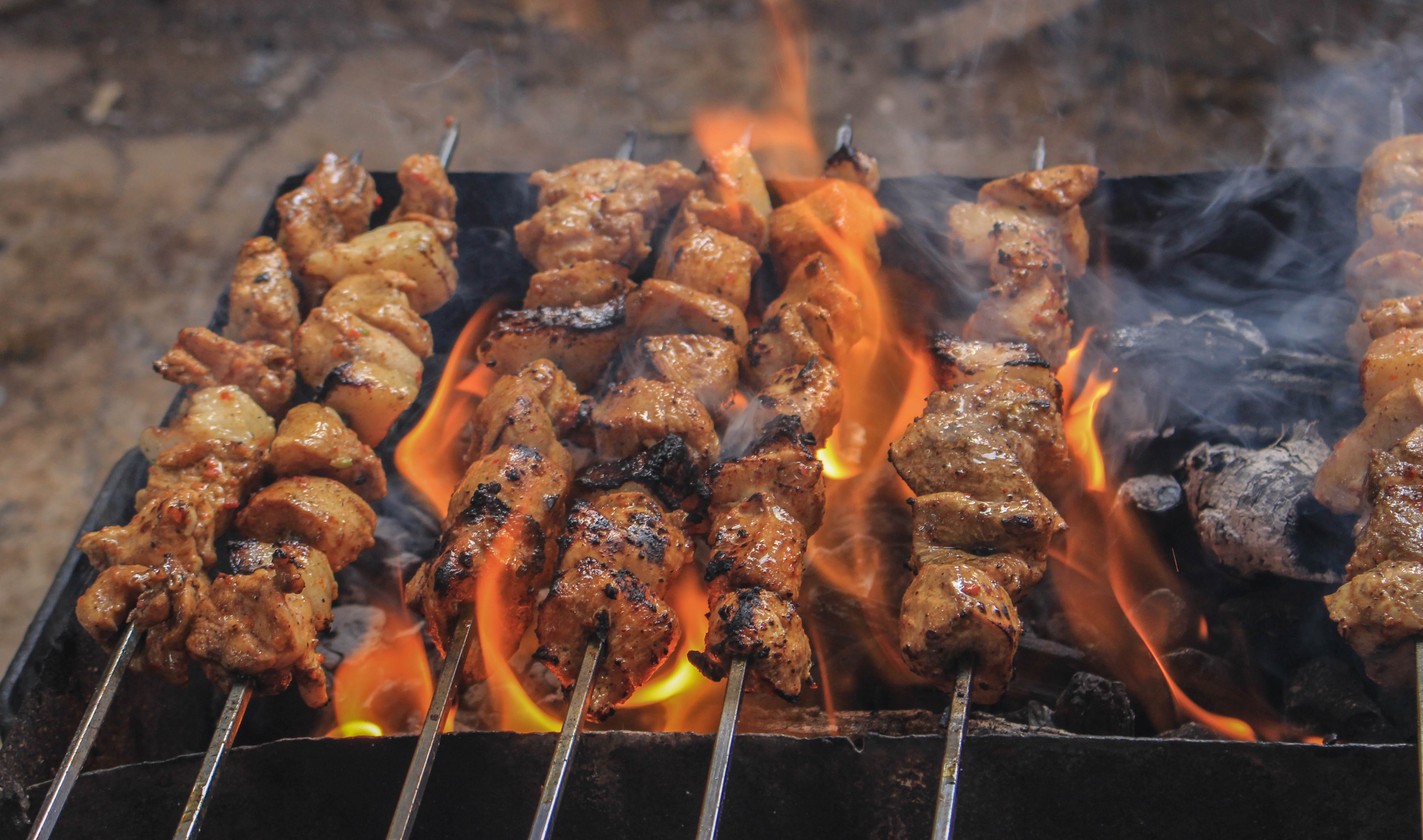
The siskebabi (shish kebab) is skewered meat, usually lamb or beef. It traces its origins from nomadic Turks, whose staple foods were meat and dairy. The shish kebab even made its way to the esteemed recipe books of the Topkapi Palace kitchens from the mid-15th century. Iskender kebap will have sliced döner kebap meat, served with hot tomato sauce, pita bread, and yogurt.
Baklava. Here’s another world-famous Turkish food, which you should indulge in when you’re in Turkey. The delectable baklava is made of thin layers of phyllo dough filled with chopped nuts (usually pistachio, almonds and walnuts) and honey or some other sweet syrup.

Said to have originated from Topkapi Palace kitchens, which were the largest in the Ottoman Empire, the royal dessert is available everywhere in the country. Certain regions even have their own version like the Gaziantep baklavasi. Gaziantep, which used to be the ancient city of Antep, has more than 500 baklava bakeries in the city. But wherever you may be in Turkey, you’ll be sure to find this sweet dessert in most cafés and restaurants. Hafiz Mustafa in Istanbul is a good place to sample traditional baklava, which they’ve been making since 1864.
Corbasi. If you tend to eat more rich and indulgent foods in your holidays (who doesn’t?), you might end up skipping a warm, soothing bowl of corbasi. But don’t. The Turkish lentil soup (Mercimek corbasi) is beloved and can be served anytime during the day. Made from red lentils, aleppo pepper, chicken stock, onions, and carrots, Mercimek corbasi is both creamy (without any cream) and healthy. It might remind you of the Indian stew dal, but the spices used are distinctly Turkish.
Dolma. In many Turkish spreads, you’ll likely find dolmas—neatly rolled grape leaves traditionally stuffed with rice and ground lamb or beef. It can also be vegetarian, which omits the meat and mix the rice with parsley, tomatoes and spices. These wonderful bite-sized rolls are packed with a lot of flavor you might not notice popping several of them in your mouth.

Dolma comes from the Turkish verb, dolmak, which means “to be filled.” Thus, dolma can also refer to stuffed tomatoes and bell peppers with a rice-based filling. There’s even midye dolma, which is stuffed mussels. It’s a Turkish street food found in coastal towns and Istanbul.
Menemen. One of the best things to experience in Turkey would be a Turkish breakfast. This means a table brimming with eggs, fresh cheeses, olives, cucumbers, tomatoes, freshly-baked bread, cured meats, preserves and jam, clotted cream with honey, sweet butter, and don’t forget the black tea. But if you don’t have enough room in your stomach for Turkish breakfast every day, you can also sit down with a plate of menemen.

Menemen is a scrambled egg dish cooked with grated tomatoes, onions, and peppers. Sucuk or spicy sausage can also be added, making it one satisfying breakfast plate. Since the eggs are whisked in with the simmered veg and its juices, it becomes this almost soupy, creamy egg dish. Break a piece of bread and scoop it out and have a great start to your day exploring Turkey.
Simit. Bread has always played an integral part of Turkish culture and cuisine. The country (and the region of Anatolia) has grown a wide range of wheat varieties for millennia that it’s no wonder they became known as the bread basket of the world. Among Turkey’s many types of bread, simit is one of the most ubiquitous.
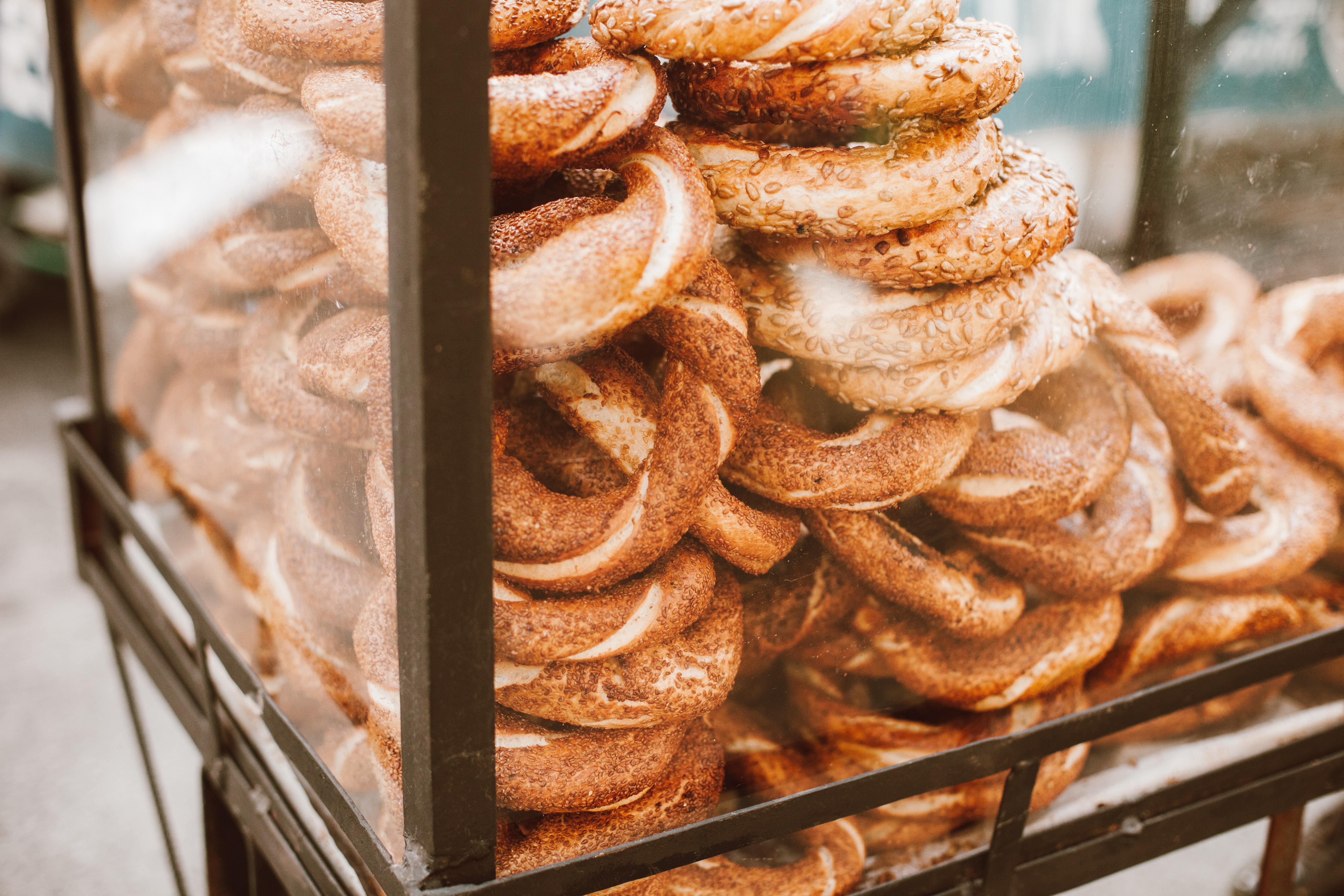
While it’s almost bagel-like in shape, simit is not boiled. It’s also crusty on the outside and soft and slightly chewy when you bite into it. You can also get a hint of sweetness since simit is dipped in molasses before being coated in sesame seeds. You can find it as part of a Turkish breakfast or sold in many food carts in the streets.
Börek. Some might say it’s the best Turkish snack. While that’s up for debate (considering Turkey has numerous mouthwatering bites and snacks), it is a must try! With origins from the Ottoman Empire, börek is a baked phyllo pastry filled with either something sweet or savory. A savory börek can have a variety of fillings, including beef, cottage cheese, spinach, or potatoes. It’s typically sold in individual portions, which you can enjoy with Turkish coffee (another must try!) in a traditional coffee shop, but they are also prepared in large trays for those who know that one slice won’t be enough.
Lahmacun. This flatbread topped with minced lamb or beef, finely chopped veg, and herbs and spices is often referred to as ‘Turkish pizza’. Sure, it looks somewhat like Italian pie (though more elongated) but the way you eat it is a bit different. Once it’s served to you, you can put some onions, fresh herbs like cilantro, greens like arugula, squeeze a bit of lemon, roll it, and enjoy. It’s often eaten as an appetizer, snack or as a quick lunch.
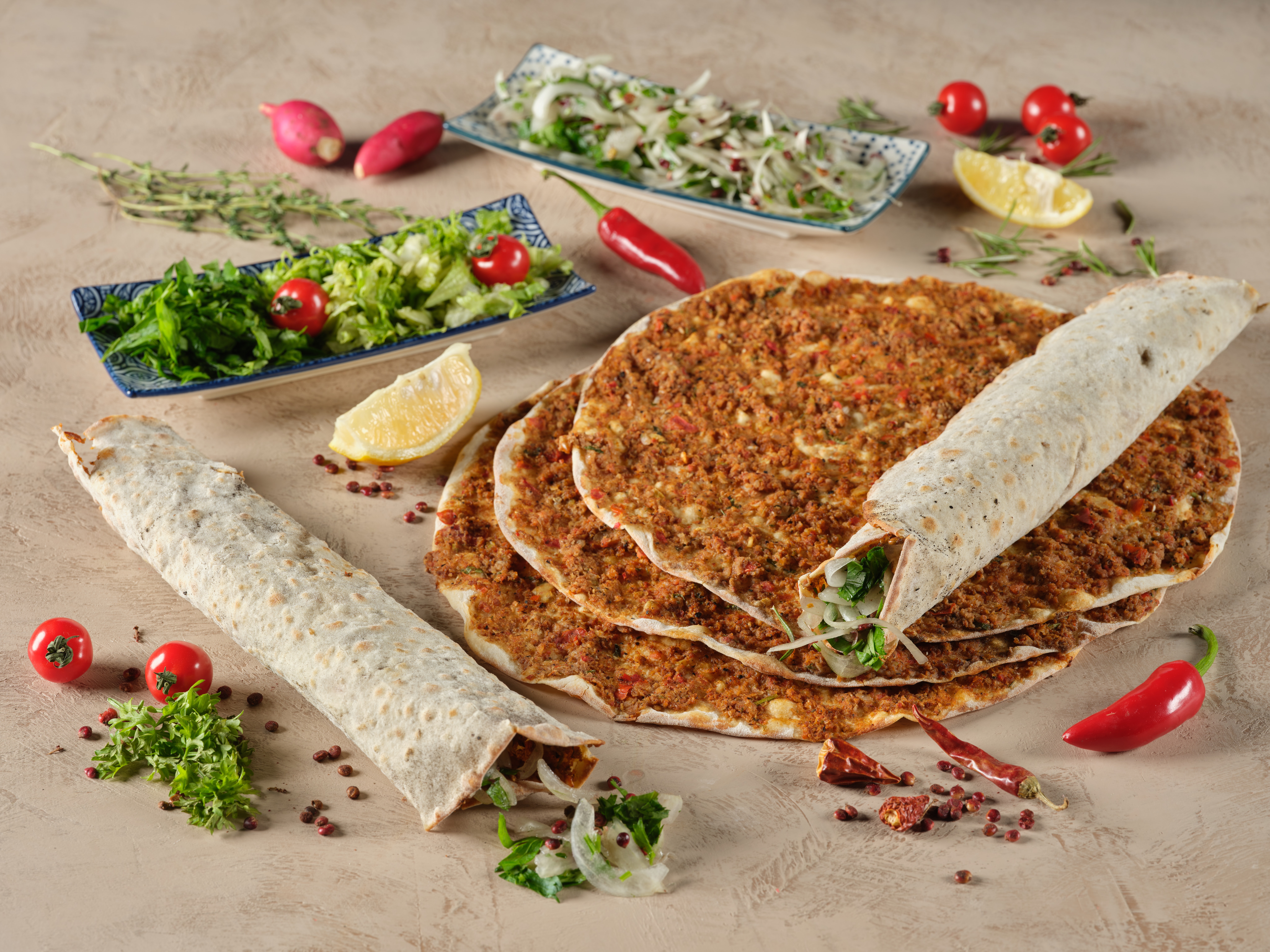
Manti. If you head over to Cappadocia to see the rock formations, be sure to sample manti. While also available in other parts of the Turkey, these traditional Turkish dumplings were believed to have been brought over from Mongolia by nomadic Turkish tribes in the 13th century. Filled with ground meat and onions, and topped usually with garlic yogurt and spicy tomato sauce, manti takes a bit of time to prepare. Make sure to sample it in between all the sightseeing you’ll do.
Dondurma. Going on holiday and consuming an unusual amount of ice cream (or dairy) seem to go hand in hand. While in Turkey, you can keep this practice alive by sampling dondurma or Turkish ice cream. The videos that show ice cream vendors putting that ice cream scoop into your cone and dangling it around, that’s Turkish ice cream.
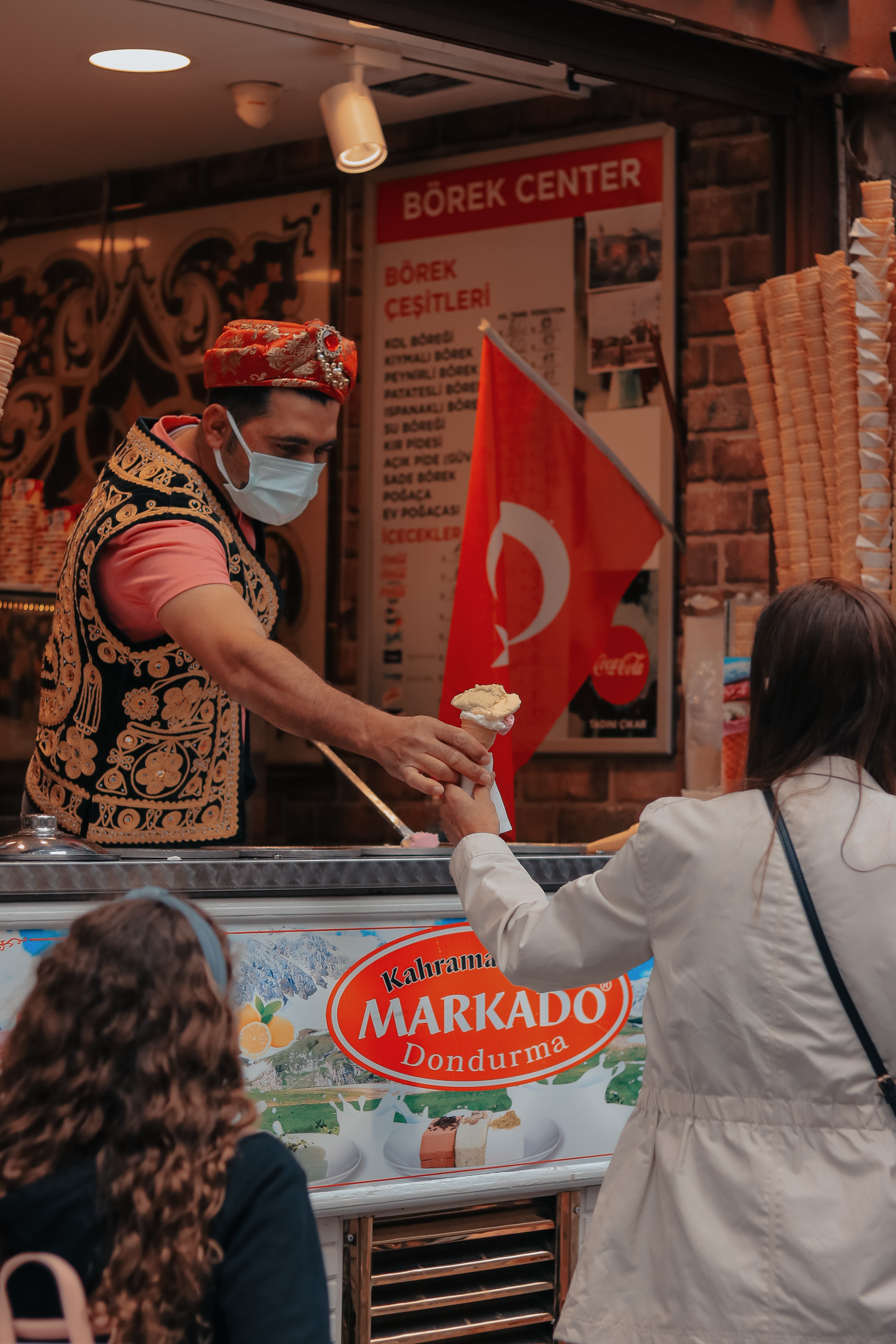
It’s known for its dense texture and how it doesn’t melt so easily. Aside from the usual ice cream ingredients, it has thickening agents: mastic and salep (made from the root of orchids). This ice cream gets so chewy and hard, it is usually eaten with a knife and fork. Add that to your long list of new things to experience when you visit Turkey.
When it comes to food, there’s so much to experience in Turkey. The country’s cuisine gives you a look into its long, diverse history and culture like no other. There are many ways and deals to see and experience Turkey. When you’re planning a trip to the country, let Starflights help you organise the ultimate Turkey holiday for you.

While online booking websites may tempt you with cost savings, It's crucial to be mindful of th

Turkey is one of those fascinating countries that when you finally visit and see for yourself,

If you want to see and experience traditional Japan and Japanese culture, a trip to the Kansai